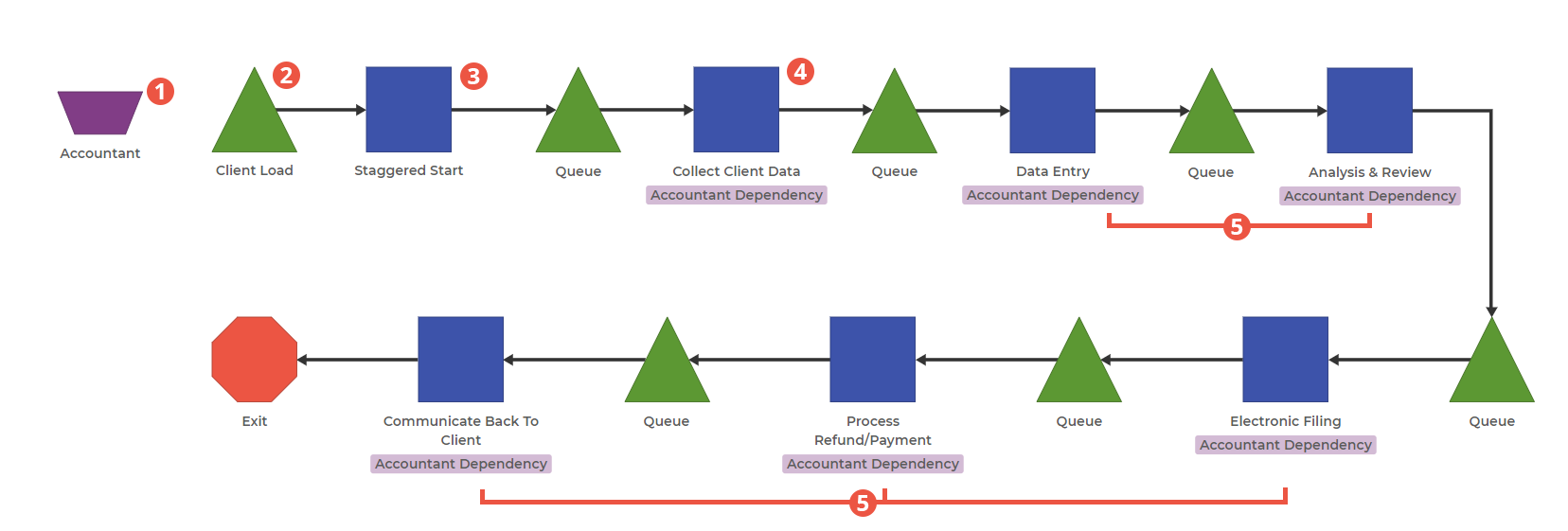Taxes Due
Taxes Due. This model shows a tax preparation process with a single accountant. This model utilizes the Resource Block to simulate the single accountant completing all the tasks for various clients.

0. There is one item in this model: Client.
1. Create the Accountant Resource Block. This Resource block will be attached to various Activity Blocks to represent a single Resource performing all activities.
2. Set a Client Load. We're starting this process with a Queue Block. In the Queue Block, you can add a specific item to start the block with a certain number of the item. In other words, by adding the "Client" item to the Client Load block, you can set the number of clients the Accountant is willing to take on.
3. Stagger the Client Arrival Times. Adding an Activity Block (not connected with the Resource Block) allows you to stagger the arrival time of clients. Set the Number of Servers in the Activity Block to the number of items you start with in the Client Load block.
4. Collect Client Data starts off the process. This block represents reviewing the data sent by the client. Give this the lowest priority in the Resource Block to indicate that the accountant should work on it last. This action frees up the Accountant to work on other tasks in the process.
5. Notice how the Resource is added to every Activity Block in this process. This ensures that the lone accountant is in charge of working on every task. Set the priority in the Resource Block in the reverse order that the Accountant should work on them to ensure no work gets stuck in the process.
This model shows one way of starting a process with a particular number of items rather than a particular demand distribution. After you input the appropriate processing times, you can experiment with the accountant's client load to ensure the completion of all the tasks. On the other hand, you can see how many might miss the deadline if there are too many clients or if the process takes too long.
Was this helpful?
